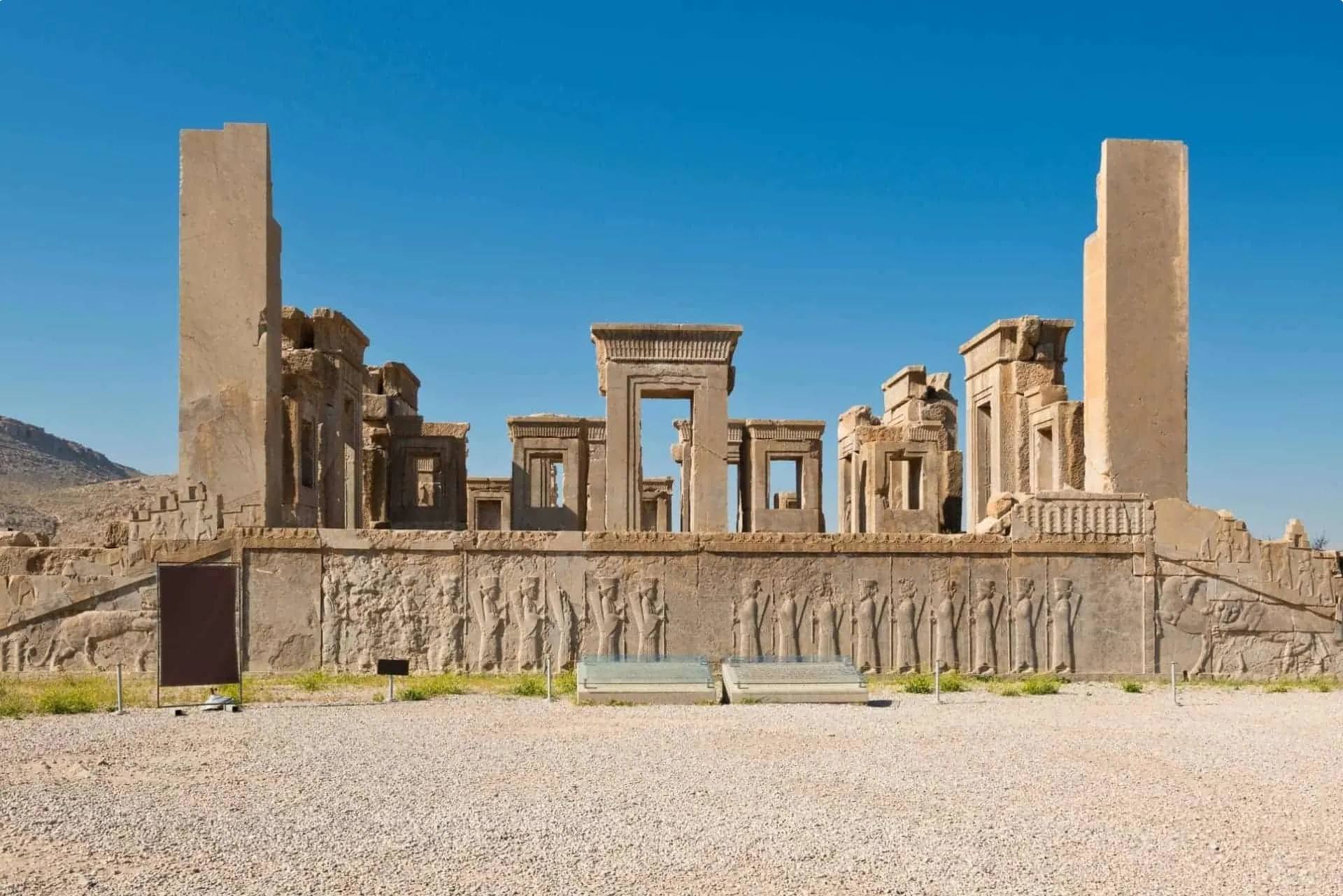Exploring Iran’s Ancient Persepolis City

Have you ever wondered what it feels like to walk through the ruins of an ancient empire? Persepolis, the ceremonial capital of the Achaemenid Empire, offers a glimpse into Iran's rich history. Founded by Darius the Great in 518 B.C., this UNESCO World Heritage site showcases grand palaces, intricate carvings, and towering columns that tell stories of a bygone era. Imagine standing where kings once held court and festivals celebrated the New Year. Whether you're a history buff or just curious about ancient civilizations, Persepolis promises an unforgettable experience. Ready to step back in time and explore this ancient wonder?
Discovering the Wonders of Persepolis
Persepolis, the ancient ceremonial capital of the Achaemenid Empire, stands as a testament to Iran's rich history. This UNESCO World Heritage site offers a glimpse into the grandeur of Persian architecture, art, and culture. Let's explore some of the most captivating spots within Persepolis.
The Magnificent Apadana Palace
The Apadana Palace, one of the largest and most impressive structures in Persepolis, served as the main audience hall. Its grandeur is evident in its towering columns and intricate reliefs.
- The Grand Staircase: Leading up to the palace, this staircase is adorned with carvings depicting representatives from various nations bringing tributes to the king.
- The Throne Hall: Also known as the Hall of 100 Columns, this vast space was used for royal receptions and ceremonies.
- The Eastern Staircase Reliefs: These detailed carvings illustrate scenes of tribute bearers, showcasing the diversity of the empire.
The Enigmatic Gate of All Nations
The Gate of All Nations, built by Xerxes I, served as the grand entrance to Persepolis. This monumental gateway symbolizes the unity and diversity of the Achaemenid Empire.
- The Lamassu Statues: Guarding the entrance, these winged bulls with human heads represent protection and power.
- The Inscription of Xerxes: An ancient text carved into the gate, proclaiming Xerxes' authority and the greatness of his empire.
The Splendor of the Tachara Palace
The Tachara Palace, also known as the Winter Palace, was built by Darius I. Its well-preserved ruins offer a glimpse into the luxurious life of Persian royalty.
- The Stone Doorways: Intricately carved with scenes of the king and his attendants, these doorways highlight the artistry of the period.
- The Central Hall: This hall, with its polished stone floors and elaborate decorations, served as a private audience chamber for the king.
The Sacred Tombs of Naqsh-e Rustam
Just a short distance from Persepolis, Naqsh-e Rustam is an ancient necropolis housing the rock-cut tombs of Persian kings. These majestic tombs are a must-see for history enthusiasts.
- The Tomb of Darius I: Carved high into the cliff face, this tomb features a grand facade with intricate reliefs.
- The Sassanian Reliefs: Below the tombs, these carvings depict scenes of royal victories and religious ceremonies.
The Intricate Art of the Treasury
The Treasury of Persepolis once held the vast wealth of the Achaemenid Empire. Though much of it was looted by Alexander the Great, the remaining artifacts provide insight into the empire's prosperity.
- The Gold and Silver Vessels: These exquisite items, adorned with intricate designs, showcase the craftsmanship of ancient Persian artisans.
- The Bull Capital: A massive stone sculpture of a bull, symbolizing strength and fertility, once supported the roof of the treasury.
The Mystical Apadana Staircase
The Apadana Staircase, leading to the grand audience hall, is renowned for its detailed carvings and historical significance.
- The Processional Reliefs: These carvings depict the diverse peoples of the empire bringing gifts to the king, highlighting the unity and diversity of the Achaemenid Empire.
- The Lion and Bull Motif: Symbolizing the eternal struggle between good and evil, this motif is a recurring theme in Persian art.
The Majestic Hall of 100 Columns
The Hall of 100 Columns, also known as the Throne Hall, is one of the largest structures in Persepolis. This grand hall was used for royal ceremonies and receptions.
- The Central Throne Room: This vast space, supported by 100 columns, was the site of important royal events.
- The Guard Reliefs: Carvings of royal guards, standing in silent vigilance, adorn the walls of the hall.
The Royal Tombs of Persepolis
The royal tombs, located on the outskirts of Persepolis, are the final resting places of the Achaemenid kings. These tombs offer a glimpse into the burial practices and beliefs of ancient Persia.
- The Tomb of Artaxerxes III: This tomb, carved into the rock face, features a grand facade with intricate reliefs.
- The Tomb of Xerxes I: Another impressive tomb, adorned with carvings depicting the king and his attendants.
The Ancient Water Management System
Persepolis' advanced water management system is a testament to the engineering prowess of the Achaemenid Empire. This system ensured a reliable water supply for the city.
- The Underground Canals: These canals, known as qanats, transported water from distant sources to the city.
- The Stone Reservoirs: Large stone reservoirs stored water for use during dry periods, ensuring a steady supply for the inhabitants of Persepolis.
Timeless Wonders of Persepolis
Persepolis stands as a testament to Iran's rich history and architectural brilliance. Walking through its ancient ruins, you can almost hear the echoes of the past. The grand palaces, intricate carvings, and towering columns tell stories of a once-mighty empire. Visiting Persepolis isn't just about seeing old stones; it's about connecting with a civilization that shaped much of the ancient world. Whether you're a history buff or just curious, this UNESCO World Heritage site offers a unique glimpse into the past. Don't miss the chance to explore the Apadana Palace, the Throne Hall, and the impressive Gate of All Nations. Each corner of Persepolis holds a piece of history waiting to be discovered. So pack your bags, grab your camera, and get ready to step back in time. Persepolis is a journey worth taking.

